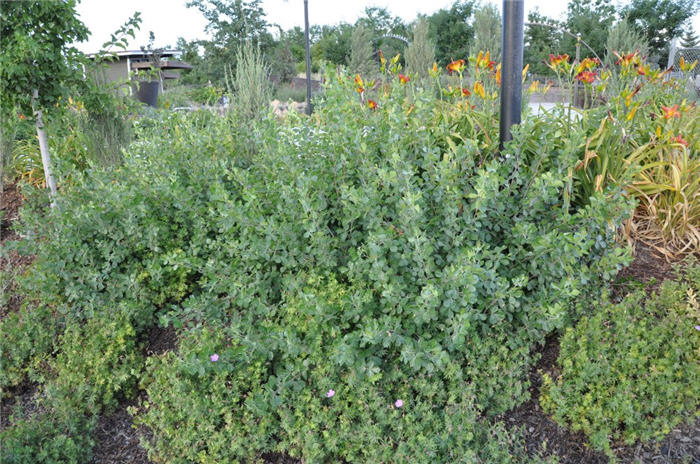| Botanical Name: Ribes alpinum | |
| Common Name: Alpine Currant |

-
Anatomy
-
Culture
-
Design
Plant Type
Shrub
Height Range
3-6'
Flower Color
Yellow
Flower Season
Spring
Leaf Color
Light Green
Bark Color
Brown
Fruit Color
Red
Fruit Season
Summer, Fall
Sun
Full, Half, Shade
Water
Medium, Extra in Summer
Growth Rate
Moderate
Soil Type
Sandy, Clay, Loam, Rocky, Unparticular
Soil Condition
Average, Rich, Poor, Well-drained, Dry
Soil pH
Neutral, Basic
Adverse Factors
n/a
Design Styles
Mediterranean, Woodland
Accenting Features
Fall Color
Seasonal Interest
Spring, Summer, Fall
Location Uses
Background, Shrub Border, Foundation, Walls / Fences
Special Uses
Hedge
Attracts Wildlife
Birds
Information by: Stephanie Duer
Photographer:
Photographer:
-
Description
-
Notes
Alpine currant is a compact, deciduous shrub that grows 3 to 6 feet tall and wide, with a very uniform, rounded-mounded form. Bright green leaves have 3 to 5 lobes, and turn to a dull yellow in fall. Flowers are greenish-yellow and inconspicuous. Dioecious (separate male and female plants). Fruit on female plants is an inedible, scarlet berry. However, most plants of this species which are sold commercially are male clones (males are reportedly immune to rust diseases). Stems are chestnut brown and may exfoliate (peel) as they mature. This is a handy shrub for the north and east foundations or under taller canopied trees as it does well in dense shade.
Grow in average, well-drained soil in full sun to part shade. Tolerates full shade. Tolerates nearly any type of soil as long as it is well draining. Prune at any time of year (flowers are insignificant) or simply allow plant to grow naturally. Extremely winter hardy. Is rabbit-resistant.